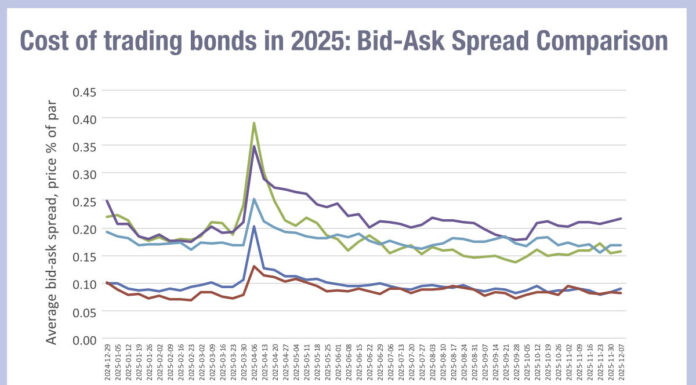As a still-new US presidential administration settles in and the Securities and Exchange Commission pivots with its own new leader, fixed income markets face heightened risk from fiscal policy and market regulation.
At the highest level, the concern is about how fiscal policy and widening deficits might increase yields on US treasury bonds, which would reverberate across fixed income markets.

“One cloud overhead is the debt ceiling,” said Steptoe LLP Senior Counsel Micah Green, referring to the recurring political negotiations to fund the government.
Moody’s cut the US credit rating last month, citing rising debt. “People aren’t worried about this, but they should be,” Green said Wednesday morning at the Fixed Income Leaders Summit in Washington, DC.
Georgetown University Professor James Angel voiced concerns about the direction of bond yields, citing a rising debt-to-GDP ratio, no apparent sense of fiscal responsibility on the part of government leaders, and chaotic rollouts of policy. “If a country isn’t healthy, its bond market isn’t healthy,” Angel said.
While Angel was constructive about new SEC Chair Paul Atkins, both panelists cited regulation as a risk to fixed income markets. “You need underwriting, sales, trading, and investor demand to have liquidity,” Green said. “The Commission has done a lot to improve market safety, but you can’t legislate or regulate for liquidity to happen. You can regulate to kill it.”
The panelists said the fixed income securities industry can be more effective and proactive with regulators and with the general public. “Bonds are different” from stocks, with regard to information flows, distribution of returns, and price discovery, Angel said. “We do a bad job articulating how they’re different, and why it matters.”
Green cited the SEC’s developing rules on Treasury clearing, which are meant to go into effect at year-end 2026, as a specific regulation that the industry has an opportunity to engage with regulators to express concerns about impacts on liquidity.
To the question of how technology shapes market structure and can beget new rules, Angel noted that regulators are consistently a step behind on technology, but that’s not in itself a problem. The challenge for regulators is to build a rules framework that covers technology where it makes sense, and otherwise “not get in the way.”
©Markets Media Europe 2025












